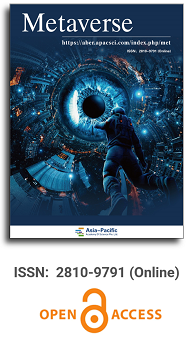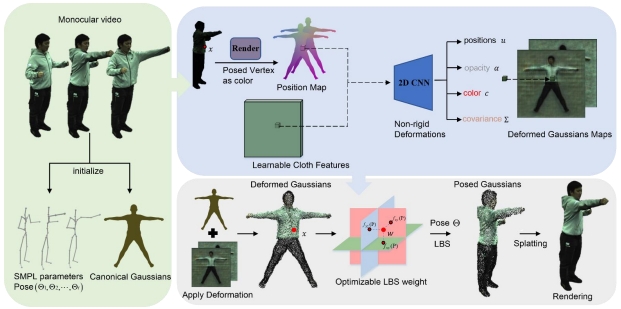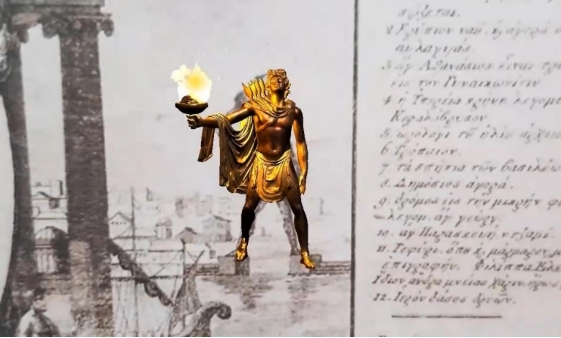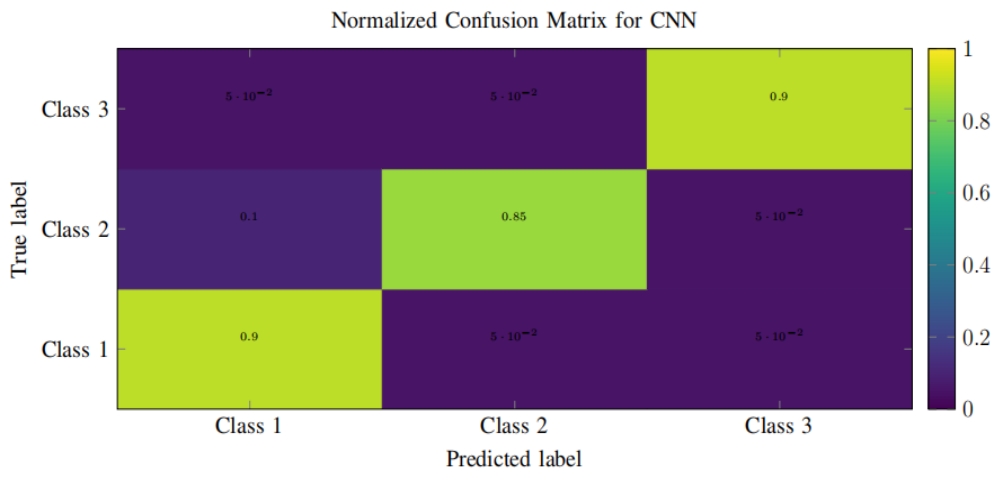
Asia Pacific Academy of Science Pte. Ltd. (APACSCI) specializes in international journal publishing. APACSCI adopts the open access publishing model and provides an important communication bridge for academic groups whose interest fields include engineering, technology, medicine, computer, mathematics, agriculture and forestry, and environment.



Bioinformation metaverse: Current status, challenges, and future research themes
Vol 6, Issue 2, 2025
Download PDF
Abstract
The bioinformation metaverse proposed in this paper is founded on bioinformatics, which takes the big data of biology to collect, filter, display the visual, calculate, merge, simulate, and optimize the big biology problem during the analysis process with the application of high-end information-processing technologies to solve the high-dimension, high-complexity problem for the bioinformation metaverse field. It can realize multi-scale traversal from atomic layers and molecules to proteins and complete biological systems. They are important for bioinformation metaverse construction and development. Multi-source data fusion and analytics methods are important in efficiently interpreting high-dimensional and high-complexity biological systems from atomic layers to molecules. In this paper, the application of the metaverse in six aspects (molecular manipulation, biological perception, protein structure study, decentralized technology, interactive simulation, and visualization) is analyzed further, highlighting the significance of the bioinformation metaverse for bioinformatics research and development. The multi-layered and closely connected biological information system can be built up to make life-science study and technology research more efficient.
Keywords
References
1. Saha SK, Saikot FK, Rahman MdS, et al. Programmable Molecular Scissors: Applications of a New Tool for Genome Editing in Biotech. Molecular Therapy-Nucleic Acids. 2019; 14: 212-238. doi: 10.1016/j.omtn.2018.11.016
2. Gillyard T, Davis J. DNA double-strand break repair in cancer: A path to achieving precision medicine. Chromatin and Genomic Instability in Cancer; 2021. doi: 10.1016/bs.ircmb.2021.06.003
3. Peng W, Cracco E, Troje NF, et al. Does anxiety induced by social interaction influence the perception of bistable biological motion?. Acta Psychologica. 2021; 215: 103277. doi: 10.1016/j.actpsy.2021.103277
4. Wu X, Li E, Liu Y, et al. Artificial multisensory integration nervous system with haptic and iconic perception behaviors. Nano Energy. 2021; 85: 106000.
5. Kuhlman B, Bradley P. Advances in protein structure prediction and design. Nature Reviews Molecular Cell Biology. 2019; 20(11): 681-697. doi: 10.1038/s41580-019-0163-x
6. Chen Y, Wang Z, Wang L, et al. Deep generative model for drug design from protein target sequence. Journal of Cheminformatics. 2023; 15(1). doi: 10.1186/s13321-023-00702-2
7. Petcu A, Pahontu B, Frunzete M, et al. A Secure and Decentralized Authentication Mechanism Based on Web 3.0 and Ethereum Blockchain Technology. Applied Sciences. 2023; 13(4): 2231. doi: 10.3390/app13042231
8. Korpal G, Scott D. Decentralization and web3 technologies. Authorea Preprints; 2022. doi: 10.36227/techrxiv.19727734.v1
9. García-Redondo P, García T, Areces D, et al. Serious Games and Their Effect Improving Attention in Students with Learning Disabilities. International Journal of Environmental Research and Public Health. 2019; 16(14): 2480. doi: 10.3390/ijerph16142480
10. DeFalco JA, Rowe JP, Paquette L, et al. Detecting and Addressing Frustration in a Serious Game for Military Training. International Journal of Artificial Intelligence in Education. 2017; 28(2): 152-193. doi: 10.1007/s40593-017-0152-1
11. Zhao Y, Jiang J, Chen Y, et al. Metaverse: Perspectives from graphics, interactions and visualization. Visual Informatics. 2022; 6(1): 56-67.
12. Chen CT, Chen SY, Liao CH, et al. An interactive nanomanipulation visualization based on molecular dynamics simulation and virtual reality. Transactions of the Canadian Society for Mechanical Engineering. 2013; 37(3): 991-1000. doi: 10.1139/tcsme-2013-0085
13. Trexler CC, Morelan AE, Oskin ME, et al. Surface Slip From the 2014 South Napa Earthquake Measured with Structure From Motion and 3‐D Virtual Reality. Geophysical Research Letters. 2018; 45(12): 5985-5991. doi: 10.1029/2018gl078012
14. Chavent M, Vanel A, Tek A, et al. GPU‐accelerated atom and dynamic bond visualization using hyperballs: A unified algorithm for balls, sticks, and hyperboloids. Journal of Computational Chemistry. 2011; 32(13): 2924-2935. doi: 10.1002/jcc.21861
15. Baaden M, Burgard M, Wipff G. TBP at the Water-Oil Interface: The Effect of TBP Concentration and Water Acidity Investigated by Molecular Dynamics Simulations. The Journal of Physical Chemistry B. 2001; 105(45): 11131-11141. doi: 10.1021/jp011890n
16. Baillif B, Cole J, McCabe P, Bender, A. Deep generative models for 3D molecular structure. Current Opinion in Structural Biology. 2023; 80: 102566.
17. Binnig G, Rohrer H. Scanning tunnelling microscopy. Helvetica Physica Acta; 1982.
18. Sivarajah I. Atomic Force Microscopy: General Principles and Applications. Azo Optics; 2021.
19. Zhang W, Fine JA, Sculley C, et al. Molecular Interactions Using New Technology: A Virtual Reality Gaming Platform to Visualize and Manipulate Molecules. Biological and Medicinal Chemistry. 2019. doi: 10.26434/chemrxiv.9889994.v1
20. Axen SD, Huang XP, Cáceres EL, et al. A Simple Representation of Three-Dimensional Molecular Structure. Journal of Medicinal Chemistry. 2017; 60(17): 7393-7409. doi: 10.1021/acs.jmedchem.7b00696
21. Kuťák D, Vázquez P, Isenberg T, et al. State of the Art of Molecular Visualization in Immersive Virtual Environments. Computer Graphics Forum. 2023; 42(6). doi: 10.1111/cgf.14738
22. Bender C, Vestergaard P, Cichosz SL. The History, Evolution and Future of Continuous Glucose Monitoring (CGM). Diabetology. 2025; 6(3): 17.
23. Ma X, Ahadian S, Liu S, et al. Smart Contact Lenses for Biosensing Applications. Advanced Intelligent Systems. 2021; 3(5). doi: 10.1002/aisy.202000263
24. Said S, Karar AS, Beyrouthy T, et al. Biometrics Verification Modality Using Multi-Channel sEMG Wearable Bracelet. Applied Sciences. 2020; 10(19): 6960. doi: 10.3390/app10196960
25. Glowacki BR, Freire R, Thomas LM, et al. An open source Etextile VR glove for real-time manipulation of molecular simulations. arXiv; 2019.
26. Amores J, Richer R, Zhao N, et al. Promoting relaxation using virtual reality, olfactory interfaces and wearable EEG. In: Proceedings of the 2018 IEEE 15th International Conference on Wearable and Implantable Body Sensor Networks (BSN); 2018. doi: 10.1109/bsn.2018.8329668
27. Baaden M, Marrink SJ. Coarse-grain modelling of protein-protein interactions. Current Opinion in Structural Biology. 2013; 23(6): 878-886. doi: 10.1016/j.sbi.2013.09.004
28. Jamialahmadi H, Khalili-Tanha G, Nazari E, Rezaei-Tavirani M. Artificial intelligence and bioinformatics: a journey from traditional techniques to innovative approaches. Gastroenterology and Hepatology from Bed to Bench; 2024.
29. Gligorijević V, Renfrew PD, Kosciolek T, et al. Structure-based protein function prediction using graph convolutional networks. Nature Communications. 2021; 12(1). doi: 10.1038/s41467-021-23303-9
30. Das R, Keep B, Washington P, et al. Scientific Discovery Games for Biomedical Research. Annual Review of Biomedical Data Science. 2019; 2(1): 253-279. doi: 10.1146/annurev-biodatasci-072018-021139
31. Buterin V. A next-generation smart contract and decentralized application platform. White Paper; 2014.
32. Zarrin J, Wen Phang H, Babu Saheer L, et al. Blockchain for decentralization of internet: prospects, trends, and challenges. Cluster Computing. 2021; 24(4): 2841-2866. doi: 10.1007/s10586-021-03301-8
33. Balakrishnan A, Jaglan P, Selly S, et al. Emerging trends of blockchain in bioinformatics: A revolution in health care. Distributed Computing to Blockchain; 2023. doi: 10.1016/b978-0-323-96146-2.00018-8
34. Stefanović M, Pržulj Đ, Stefanović D, et al. The proposal of new Ethereum request for comments for supporting fractional ownership of non-fungible tokens. Computer Science and Information Systems. 2023; 20(3): 1133-1155.
35. Poon J, Buterin V. Plasma: Scalable autonomous smart contracts. White paper; 2017.
36. Cabot-Nadal MÀ, Payeras-Capellà MM, Mut-Puigserver M, et al. Improving the token ERC-721 implementation for selective receipt: rejectable NFTs. In 2022 6th International conference on system reliability and safety (ICSRS). IEEE; 2022. pp. 243-250.
37. Marin O, Cioara T, Anghel I. Blockchain Solution for Buildings’ Multi-Energy Flexibility Trading Using Multi-Token Standards. Future Internet. 2023; 15(5): 177. doi: 10.3390/fi15050177
38. Senior AW, Evans R, Jumper J, et al. Improved protein structure prediction using potentials from deep learning. Nature. 2020; 577(7792): 706-710.
39. Baid SK, Bandyopadhyay A, Srivastava P, Swain S. Metaverse Using Game Theory in Healthcare. In Healthcare Services in the Metaverse. CRC Press; 2024. pp. 134-153.
40. Taylor S, Soneji S. Bioinformatics and the Metaverse: Are We Ready?. Frontiers in Bioinformatics; 2022. doi: 10.3389/fbinf.2022.863676
41. Lin H, Wan S, Gan W, et al. Metaverse in education: Vision, opportunities, and challenges. In 2022 IEEE International Conference on Big Data (Big Data). IEEE; 2022. pp. 2857-2866.
42. Xu H, Berres A, Shao Y, et al. Toward a smart metaverse city: Immersive realism and 3d visualization of digital twin cities. Advances in Scalable and Intelligent Geospatial Analytics. 2023; 245-257.
43. Ghanbarzadeh R, Ghapanchi AH. Uncovering educational outcomes deriving from students’ acceptance and involvement with 3D virtual worlds. Education and Information Technologies. 2020; 26(1): 311-337. doi: 10.1007/s10639-020-10272-7
44. Baaden M. Deep inside molecules—digital twins at the nanoscale. Virtual Reality & Intelligent Hardware. 2022; 4(4): 324-341. doi: 10.1016/j.vrih.2022.03.001
45. Choi J, Lee EJ, Jang WB, Kwon SM. Development of biocompatible 3D-printed artificial blood vessels through multidimensional approaches. Journal of Functional Biomaterials. 2023; 14(10): 497.
46. Arunkumar P, Surendiran B, Suresh S, Sankaranarayanan V. Zero-Knowledge Proof Approach for DNA STR Profile Security using Blockchain: A Framework for Enhancing Genetic Privacy. NFSU—Journal of Cyber Security and Digital Forensics; 2024.
47. Park YH, Kim Y, Shim J. Blockchain-Based Privacy-Preserving System for Genomic Data Management Using Local Differential Privacy. Electronics. 2021; 10(23): 3019. doi: 10.3390/electronics10233019
48. Bohua L, Yuexin W, Yakun O, et al. Ethical framework on risk governance of synthetic biology. Journal of Biosafety and Biosecurity. 2023; 5(2): 45-56. doi: 10.1016/j.jobb.2023.03.002
49. Zeng Y, Bao A. From Virtual Reality to Metaverse: Ethical Risks and the Co-governance of Real and Virtual Worlds. International Research Center for AI Ethics and Governance; 2022.
50. Corringer PJ, Baaden M, Bocquet N, et al. Atomic structure and dynamics of pentameric ligand-gated ion channels: new insight from bacterial homologues. The Journal of Physiology. 2010; 588(4): 565-572. doi: 10.1113/jphysiol.2009.183160
51. Thomson L L, Peabody Jr A E. Privacy and security challenges in bioinformatics//Bioinformatics, Medical Informatics and the Law. Edward Elgar Publishing, 2022: 205-247.
52. Zhang Z, Bajic VB, Yu J, et al. Data integration in bioinformatics: current efforts and challenges. Bioinformatics-Trends and Methodologies. 2011; 41-56.
53. Valdivia-Granda W. The next meta-challenge for Bioinformatics. Bioinformation. 2008; 2(8): 358-362. doi: 10.6026/97320630002358
54. O’Donoghue S I. Grand challenges in bioinformatics data visualization. Frontiers in Bioinformatics. 2021; 1: 669186.
55. Xie Y, Zhang J, Wang H, et al. Applications of Blockchain in the Medical Field: Narrative Review. Journal of Medical Internet Research. 2021; 23(10): e28613. doi: 10.2196/28613
56. Ratta P, Kaur A, Sharma S, et al. Application of Blockchain and Internet of Things in Healthcare and Medical Sector: Applications, Challenges, and Future Perspectives. Khan R, ed. Journal of Food Quality. 2021; 2021: 1-20. doi: 10.1155/2021/7608296
57. Siyal AA, Junejo AZ, Zawish M, et al. Applications of Blockchain Technology in Medicine and Healthcare: Challenges and Future Perspectives. Cryptography. 2019; 3(1): 3. doi: 10.3390/cryptography3010003
58. Haleem A, Javaid M, Singh RP, et al. Blockchain technology applications in healthcare: An overview. International Journal of Intelligent Networks. 2021; 2: 130-139. doi: 10.1016/j.ijin.2021.09.005
Supporting Agencies
Copyright (c) 2025 Author(s)
License URL: https://creativecommons.org/licenses/by/4.0/

This site is licensed under a Creative Commons Attribution 4.0 International License (CC BY 4.0).

Prof. Zhigeng Pan
Director, Institute for Metaverse, Nanjing University of Information Science & Technology, China

Prof. Jianrong Tan
Academician, Chinese Academy of Engineering, China
Conference Time
December 15-18, 2025
Conference Venue
Hong Kong Convention and Exhibition Center (HKCEC)
...
Metaverse Scientist Forum No.3 was successfully held on April 22, 2025, from 19:00 to 20:30 (Beijing Time)...
We received the Scopus notification on April 19th, confirming that the journal has been successfully indexed by Scopus...
We are pleased to announce that we have updated the requirements for manuscript figures in the submission guidelines. Manuscripts submitted after April 15, 2025 are required to strictly adhere to the change. These updates are aimed at ensuring the highest quality of visual content in our publications and enhancing the overall readability and impact of your research. For more details, please find it in sumissions...






.jpg)
.jpg)

